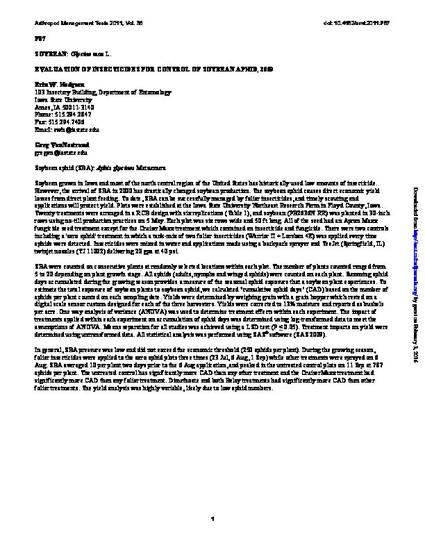
Soybean grown in Iowa and most of the north central region of the United States has historically used low amounts of insecticide. However, the arrival of SBA in 2000 has drastically changed soybean production. The soybean aphid causes direct economic yield losses from direct plant feeding. To date, SBA can be successfully managed by foliar insecticides, and timely scouting and applications will protect yield. Plots were established at the Iowa State University Northeast Research Farm in Floyd County, Iowa. Twenty treatments were arranged in a RCB design with six replications (Table 1), and soybean (PB2636N RR) was planted in 30-inch rows using no-till production practices on 5 May. Each plot was six rows wide and 50 ft long. All of the seed had an Apron Maxx fungicide seed treatment except for the CruiserMaxx treatment which contained an insecticide and fungicide. There were two controls including a 'zero aphid' treatment in which a tank-mix of two foliar insecticides (Warrior II + Lorsban 4E) was applied every time aphids were detected. Insecticides were mixed in water and applications made using a backpack sprayer and TeeJet (Springfield, IL) twinjet nozzles (TJ 11002) delivering 20 gpa at 40 psi.
Available at: http://works.bepress.com/erin_hodgson/194/

This article is from Arthropod Management Tests 36 (2011: F87, doi:10.4182/amt.2011.F87. Posted with permission.